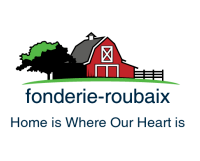
We remain involved in the task of making known the most complex concepts of our world of PVC windows in the simplest and most accessible way for everyone.
Every day, we see that more and more people are looking for information about windows on the Internet. Aluminum or PVC? Which window is more efficient? And, above all, what is the best window I can put in my home?
And in that search, data appears that, instead of information, becomes noise because nobody bothers to explain it so that it is understood and put into context and value. Transmittance, U value, tilt-and-turn, perimeter hardware… and we could continue with a thousand others.
First, you have to explain what they mean.
And second, tools must be provided to be able to relate them to each other and to be able to compare their actual usefulness for us, specifically of the different types of windows we can find on the market.
Last week, we talked about tilt-and-turn windows and their different types, advantages, and disadvantages; in this article, we want to do the same with “the other side of the coin”: sliding windows.
What is a PVC sliding window?
To begin with, it seems much more correct to speak of sliding windows than sliding windows.
Sliding windows are just one type of sliding window.
What happens is that, for a long time, the most common type of windows in Spain were sliding aluminum windows, which were very economical but inefficient and insulating.
For this reason, even today, many believe they are the only alternative to the traditional casement window. Nothing could be further from the truth. Thanks to our sector’s efforts in innovation and the search for greater efficiency, the range of sliding windows is much broader and, therefore, more capable of improving consumers’ lives—the big goal.
That said, a sliding window is one whose leaves open by sliding on a hardware system, to the right or the left, usually parallel to the wall and not perpendicular to it.
The most obvious difference with the practicable windows is precisely this opening by sliding instead of hinges. Each type of window has its advantages and disadvantages. But not only in terms of the system itself, but everything has to be studied according to the specific needs of each space and each home.
Advantages of using a sliding window or sliding window
- Sliding windows require very little interior space since when they open, they are not a project but are parallel to the wall. Therefore, they are ideal for small rooms or places where many obstacles prevent installing a tilt-and-turn window.
- At the same time, they are ideal for large openings and to allow passage between different spaces, such as a balcony or terrace. Some systems even allow the lower frame to be replaced by a floor-level slab.
- The proportion of glazing is, in general, more significant than in casement windows, so they offer more excellent light.
- Depending on the chosen sliding system, the insulation and efficiency levels can differ. Although traditional sliding systems are not very airtight, our innovative Ecoven plus 82 lift is suitable for Passivhaus passive house projects.
Disadvantages of using a sliding window
- As we have said, sliding windows are generally less efficient and insulating than casement windows with perimeter fittings (with pressure closures on all frames). However, this indeed varies a lot depending on the system. Sliding windows are much less hermetic than lift windows, equipped with potent hardware.
- Sliding systems usually have dimensions and weights much higher than opening windows. Therefore, the hardware is subjected to more significant pressure and stress. A sliding window made with a good profile but with mediocre hardware has a higher risk of suffering breakdowns and making it difficult to operate, causing air leaks and, in other words, allowing the passage of cold and noise -often in the form of annoying hisses caused by the wind.
- Most of the time, a sliding window does not allow the complete opening of the opening. In almost all the systems, apart always remains glazed, except in the folding windows and our sliding Ecoven plus with pocket closure, whose leaves are hidden behind the partition.
- Since the leaves do not open inwards but overlap, cleaning is more complex and sometimes dangerous (if the body is imprudently sticking out too much outside a high-rise building). Although today, there are indeed magnetic systems that allow the complete and safe cleaning of the glass from the inside, cleaning the frames and rails may sometimes require the disassembly of the leaves.
For this reason, the general recommendation is to opt for sliding systems in terrace openings or as doors to exterior spaces rather than as standard windows, where tilt-and-turn systems are preferable always, as we have said, depending on the specific characteristics of each project and each space.
Types of sliding windows
From this explanation, we can talk about four main types of sliding windows: sliding windows, parallel windows, lift windows, and folding windows.
sliding windows
Sliding windows, properly speaking, are those in which each leaf slides smoothly and lightly on a guide rail thanks to its bearings. Systems of huge dimensions can be achieved by increasing the number of leaves and guides.
They are handy for small rooms with no space for opening windows. However, they have the main drawback: it is generally the most miniature insulating sliding system since the rail system does not allow a high degree of airtightness.
Our sliding Ecoven Plus, thanks to its profile system, with three chambers in the frame and two in the sash with a depth of 70 mm, offers high thermal and acoustic insulation and allows the manufacture of large windows. We can make systems of 2 or 3 lanes.
In addition, we can replace the lower frame with a slab at ground level. And, as we have said, we also offer it with a pocket closure so that the leaves are hidden behind the partition, and the hole can be opened entirely.
Lifting or lifting windows
Lifting windows, also called lift-up windows, represent the maximum energy efficiency, insulation, and airtightness achieved in sliding elements.
They are very high-performance products, which consist of the fact that the entire weight of the sash is supported by the hardware, which allows the sash to move extremely exceptionally and efficiently on a guide in its opening while it closes completely. Airtight.
It is shocking to operate one of these windows, moving the several hundred kilos that each of its leaves weighs with a single finger.
folding windows
Finally, folding windows are those whose leaves fold together like an accordion. This folding can be to one side or the other and also to both sides.
The main advantage of this system is that it allows total opening without elements that hinder the passage, which is why it has traditionally been widely used to make large exit doors to terraces or balconies.
However, it is also one of the most miniature hermetic systems precisely because of how the sheets must be folded, which is why its use is not as frequent anymore.


